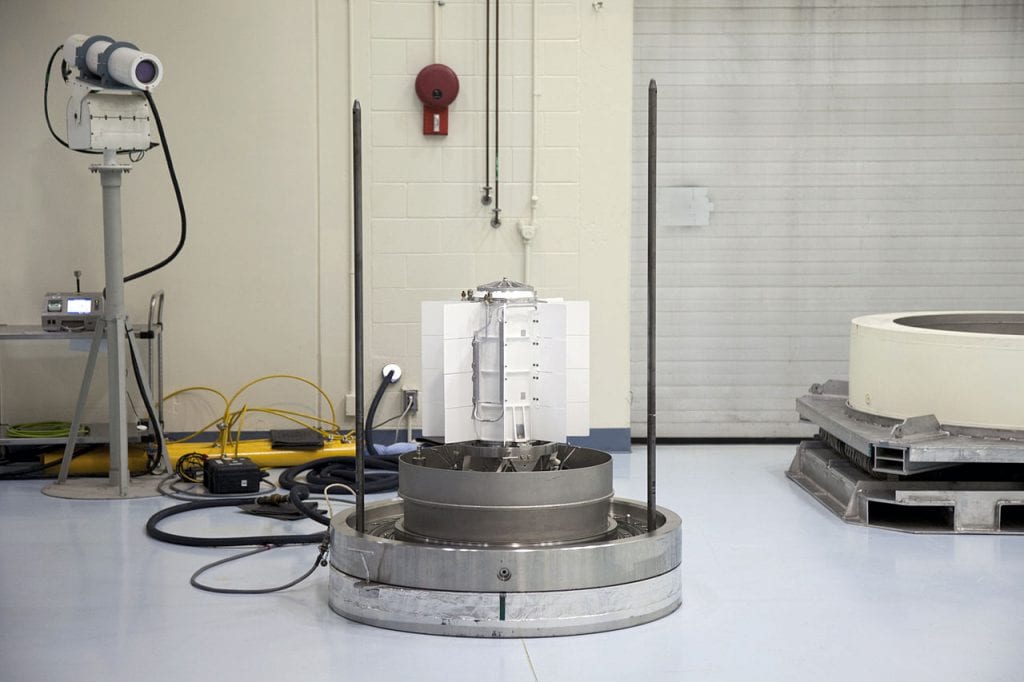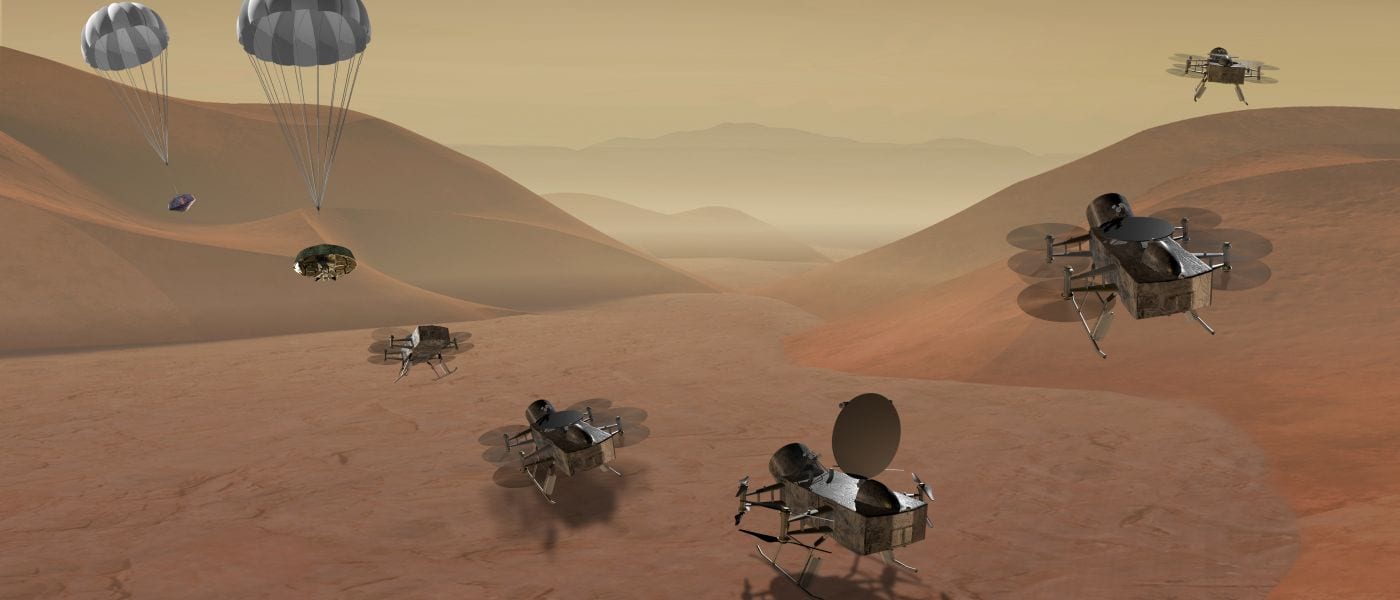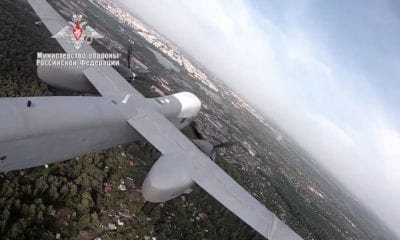NASA Chooses Dragonfly Drone to Discover Proof of Alien Life
Saturn’s largest moon, Titan, is a promising candidate for extraterrestrial life. NASA may be sending a “Dragonfly” drone to explore Titan’s surface. With its vast oceans and methane filled rivers and lakes, Titan is a prime candidate for the search for extraterrestrial life.
Selected from a field of 12 possibilities, NASA chose a quad-copter by the name “Dragon-fly” as one of two finalists for its next mission – which carries a price tag of almost one billion dollars. The “Dragonfly” drone, like its namesake, would flit between different parts of Titan’s surface to study the moon’s landscape and its habitability. Dragonfly is a dual-quadcopter lander that would take advantage of the environment on Titan to fly to multiple locations, some hundreds of miles apart, to sample materials and determine the surface composition. The four science instruments on the vehicle would investigate Titan’s organic chemistry and habitability, monitor atmospheric and surface conditions, image landforms to investigate geological processes, and perform seismic studies. Dragonfly would use a Multi-Mission Radioisotope Thermoelectric Generator, similar to the one used by the Curiosity rover on Mars, to power its systems.

NASA/Kim Shiflett: Multi Mission Radioisotope Thermoelectric Generator
The other contender is a mission to the comet 67P/Churyumov-Gerasimenko, where a lander would snag a piece of the comet’s nucleus and return it to Earth for further study.The plutonium-powered drone would alternate between taking measurements on the moon’s surface and flying from one site to another, traveling tens to hundreds of kilometers with each flight.
Extraterrestrial Exploration
Elizabeth Turtle, principal investigator for Dragonfly from Johns Hopkins University Applied Physics Laboratory, told the HUB, “Titan is a fascinating ocean world. It’s the only moon in the solar system with a dense atmosphere, weather, clouds, rain, and liquid lakes and seas—and those liquids are ethane and methane. There’s so much amazing science and discovery to be done on Titan.” Turtle added that the Dragonfly was expected to land on Titan in 2034.
“This is a giant leap forward in developing our next bold mission of science discovery,” said Thomas Zurbuchen, associate administrator for NASA’s Science Mission Directorate in Washington. “These are tantalizing investigations that seek to answer some of the biggest questions in our solar system today.”
Comet Astrobiology Exploration Sample Return (CAESAR)
The CAESAR mission seeks to return a sample from 67P/Churyumov-Gerasimenko, led by Steve Squyres of Cornell University in Ithaca, New York, CAESAR would be managed by NASA’s Goddard Space Flight Center in Greenbelt, Maryland. The CAESAR and Dragonfly missions will receive funding through the end of 2018 to further develop and mature their concepts.
The call for concepts was limited to six mission themes: comet surface sample return, lunar south pole-Aitken Basin sample return, ocean worlds (Titan and/or Enceladus), Saturn probe, Trojan asteroid tour and rendezvous, and Venus in situ explorer.
“This brings us one step closer to launching a bold and very exciting space exploration mission to Titan,” said Ralph Semmel, APL’s Director. “We are grateful for the opportunity to further develop our New Frontiers proposals and excited about the impact these NASA missions will have for the world.”























